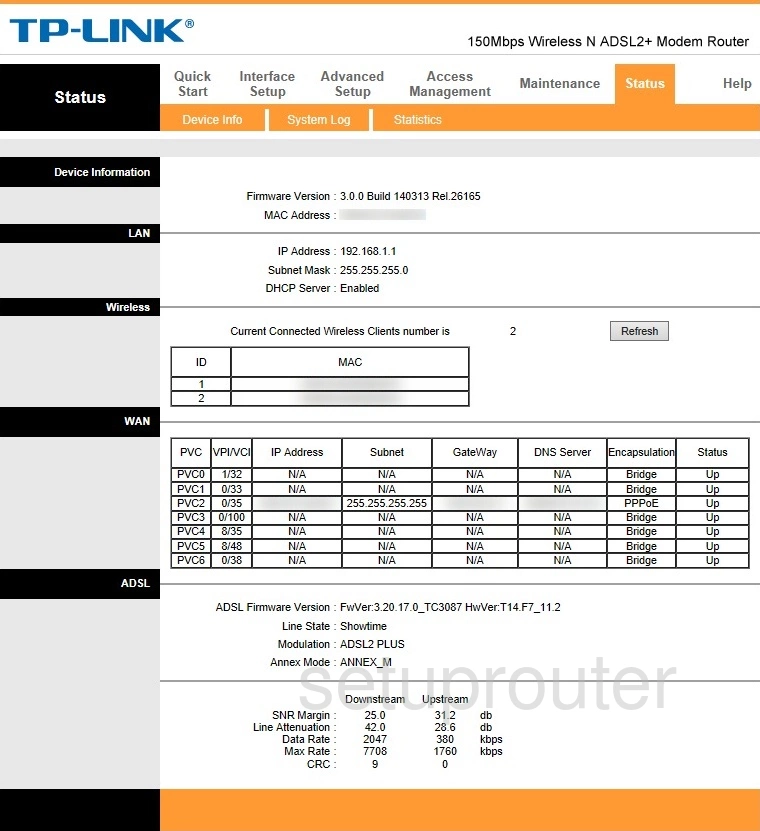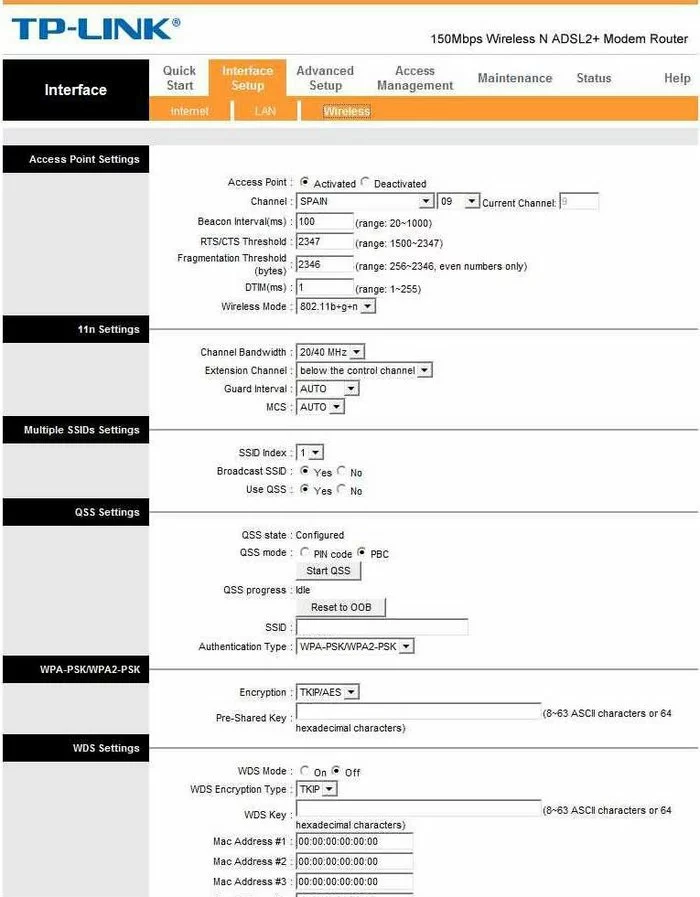The TP-Link TD-W8951ND router is considered a wireless router because it offers WiFi connectivity. WiFi, or simply wireless, allows you to connect various devices to your router, such as wireless printers, smart televisions, and WiFi enabled smartphones.
Other TP-Link TD-W8951ND Guides
This is the wifi guide for the TP-Link TD-W8951ND. We also have the following guides for the same router:
- TP-Link TD-W8951ND - How to change the IP Address on a TP-Link TD-W8951ND router
- TP-Link TD-W8951ND - TP-Link TD-W8951ND User Manual
- TP-Link TD-W8951ND - TP-Link TD-W8951ND Login Instructions
- TP-Link TD-W8951ND - How to change the DNS settings on a TP-Link TD-W8951ND router
- TP-Link TD-W8951ND - Information About the TP-Link TD-W8951ND Router
- TP-Link TD-W8951ND - TP-Link TD-W8951ND Screenshots
- TP-Link TD-W8951ND - Reset the TP-Link TD-W8951ND
WiFi Terms
Before we get started there is a little bit of background info that you should be familiar with.
Wireless Name
Your wireless network needs to have a name to uniquely identify it from other wireless networks. If you are not sure what this means we have a guide explaining what a wireless name is that you can read for more information.
Wireless Password
An important part of securing your wireless network is choosing a strong password.
Wireless Channel
Picking a WiFi channel is not always a simple task. Be sure to read about WiFi channels before making the choice.
Encryption
You should almost definitely pick WPA2 for your networks encryption. If you are unsure, be sure to read our WEP vs WPA guide first.
Login To The TP-Link TD-W8951ND
To get started configuring the TP-Link TD-W8951ND WiFi settings you need to login to your router. If you are already logged in you can skip this step.
To login to the TP-Link TD-W8951ND, follow our TP-Link TD-W8951ND Login Guide.
Find the WiFi Settings on the TP-Link TD-W8951ND
If you followed our login guide above then you should see this screen.

After logging into the TP-Link TD-W8951ND you are taken to the Home page. From there, select the option of Interface Setup. Then beneath that in the orange bar, select Wireless.
Change the WiFi Settings on the TP-Link TD-W8951ND

This places you on the page you see above. The first section is titled Access Point Settings. You can check the channel in this section. Use the space just to the right of the Channel to choose the correct region. Then to the right of that, select the channel you want to use. Just make sure you are on channels 1,6, or 11. Learn why in this Wireless Channel guide.
The second section is titled 11n Settings. Skip this section there is nothing you need to change here.
Below that is the Multiple SSIDs Settings. The only thing to do in the section is disable the QSS. QSS is a form of WPS. Please read this What is WPS Guide. Then click No to the right of Use QSS.
The next section is called QSS Settings. Your QSS shouldn't be configured. So just skip down to the space titled SSID and enter in the network name you want to use. This name should not contain any router specific information or personal data. Take a look at this SSID guide to learn more.
Under the SSID is a drop down list titledAuthentication Type. For maximum security we recommend using WPA2-PSK. This option should be available for this router but if it is not, you will need to update your firmware. Learn all about the different authentication types in this WEP vs. WPA Guide.
Next is the section titled WPA-PSK or possibly, WPA2-PSK. Go ahead and set the Encryption to AES.
The last setting you need to change is called the Pre-Shared Key. This is the internet password. Create a strong password here. We have lost of different password ideas for you in this Password Guide.
Don't worry about any of the other sections, just don't forget to Save your changes you have made.
Congratulations, you did it!
Possible Problems when Changing your WiFi Settings
After making these changes to your router you will almost definitely have to reconnect any previously connected devices. This is usually done at the device itself and not at your computer.
Other TP-Link TD-W8951ND Info
Don't forget about our other TP-Link TD-W8951ND info that you might be interested in.
This is the wifi guide for the TP-Link TD-W8951ND. We also have the following guides for the same router:
- TP-Link TD-W8951ND - How to change the IP Address on a TP-Link TD-W8951ND router
- TP-Link TD-W8951ND - TP-Link TD-W8951ND User Manual
- TP-Link TD-W8951ND - TP-Link TD-W8951ND Login Instructions
- TP-Link TD-W8951ND - How to change the DNS settings on a TP-Link TD-W8951ND router
- TP-Link TD-W8951ND - Information About the TP-Link TD-W8951ND Router
- TP-Link TD-W8951ND - TP-Link TD-W8951ND Screenshots
- TP-Link TD-W8951ND - Reset the TP-Link TD-W8951ND